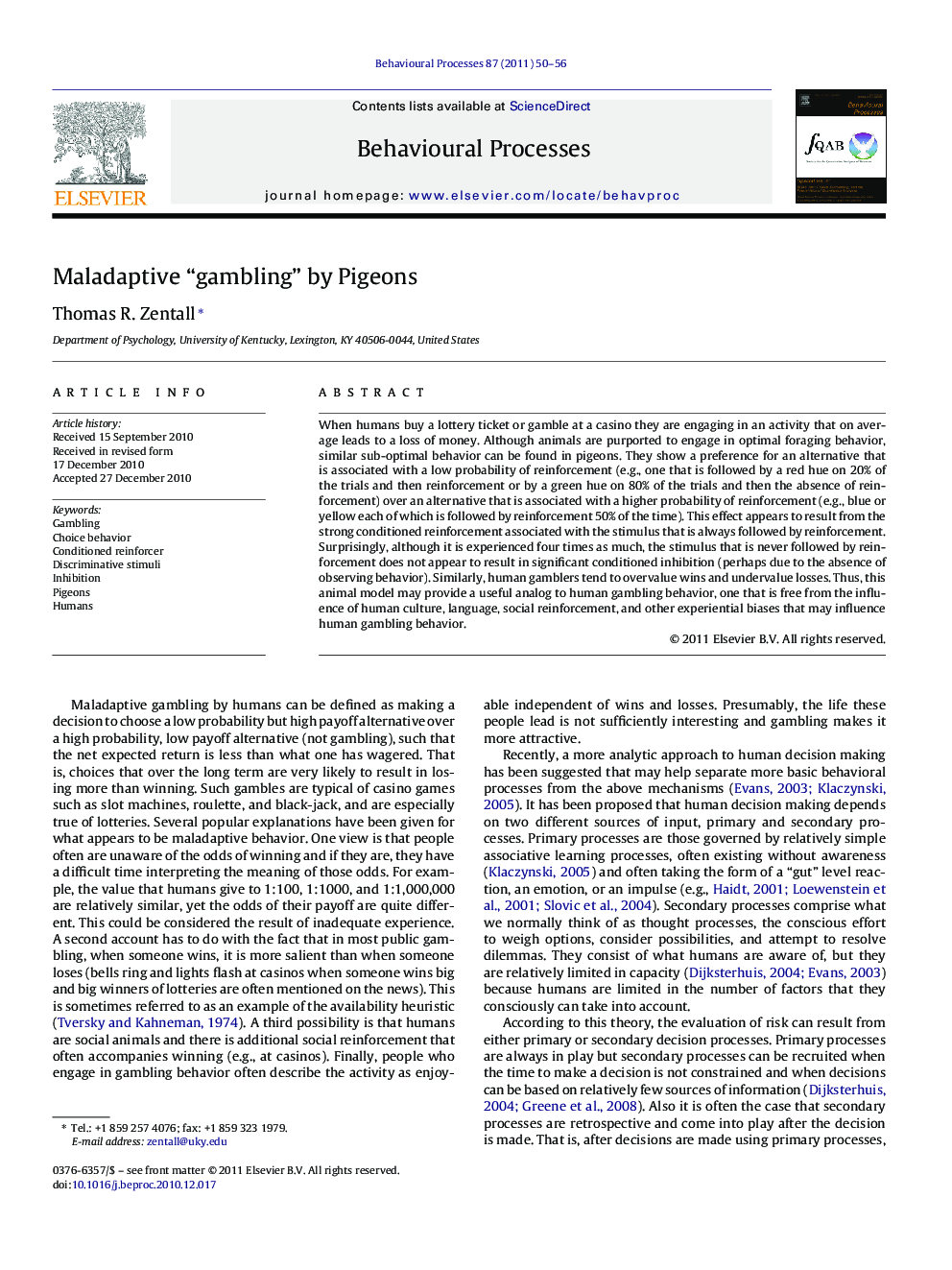| کد مقاله | کد نشریه | سال انتشار | مقاله انگلیسی | نسخه تمام متن |
|---|---|---|---|---|
| 2427048 | 1105939 | 2011 | 7 صفحه PDF | دانلود رایگان |

When humans buy a lottery ticket or gamble at a casino they are engaging in an activity that on average leads to a loss of money. Although animals are purported to engage in optimal foraging behavior, similar sub-optimal behavior can be found in pigeons. They show a preference for an alternative that is associated with a low probability of reinforcement (e.g., one that is followed by a red hue on 20% of the trials and then reinforcement or by a green hue on 80% of the trials and then the absence of reinforcement) over an alternative that is associated with a higher probability of reinforcement (e.g., blue or yellow each of which is followed by reinforcement 50% of the time). This effect appears to result from the strong conditioned reinforcement associated with the stimulus that is always followed by reinforcement. Surprisingly, although it is experienced four times as much, the stimulus that is never followed by reinforcement does not appear to result in significant conditioned inhibition (perhaps due to the absence of observing behavior). Similarly, human gamblers tend to overvalue wins and undervalue losses. Thus, this animal model may provide a useful analog to human gambling behavior, one that is free from the influence of human culture, language, social reinforcement, and other experiential biases that may influence human gambling behavior.
Research highlights▶ Pigeons choose sub-optimally when choice results in discriminative stimuli. ▶ They prefer 20% reinforcement with discriminative stimuli over 50% without. ▶ They prefer a 20% prob. of getting 10 pellets over a 100% prob. of 3 pellets. ▶ This behavior provides a model of human gambling behavior.
Journal: Behavioural Processes - Volume 87, Issue 1, May 2011, Pages 50–56